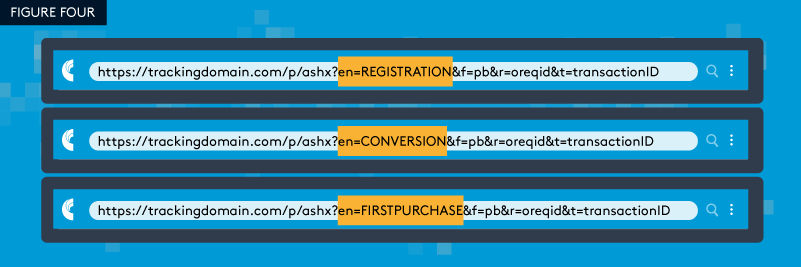The Dynamic Offer Pixel, Part Two – A Key to Simplifying Postback URL Management

Curious about how you can cut your pixel management time in half? The Dynamic Offer Pixel equips customers with the quintessential solution. Networks can leverage the Dynamic Offer Pixel in conjunction with the event name parameter to provide a single set of pixel instructions to all advertisers across their network.
In this latest edition of our tracking series, we continue to explore the features that contribute to CAKE’s tracking framework and how they enable customers with revenue-generating and time-saving benefits that fuel growth, expansion, and accuracy.
Today, we’re covering part two of the Dynamic Offer Pixel. Before we jump into the most powerful functionality of the Dynamic Offer Pixel, let’s set the groundwork by doing a quick refresh on what was covered in part one.
The Dynamic Offer Pixel – A brief summary
The Dynamic Offer Pixel is a postback pixel that can be leveraged for all offers tied to an advertiser. This removes the laborious task of generating, placing, and testing a new postback URL for each individual offer. In addition, the Dynamic Offer Pixel streamlines integrations between the network and advertiser, facilitates cookieless tracking and measurement, and supports third-party tracking platforms that can only accept a single pixel.
To create the Dynamic Offer Pixel, the hardcoded Offer ID parameter is removed from the postback URL. The network updates the landing page URL to include the #oreqid# token, which dynamically passes the Offer ID and the Request ID. This value is then passed back on the postback URL in the r= parameter.

Now, let’s get to the best part.
Reclaim your time – Standardize pixel management across all advertisers
To simplify pixel management, even more, customers can use the Dynamic Offer Pixel with the event name parameter to standardize their networks pixel instructions across all advertisers. In other words, take your ad operations to the next level!
For example, imagine working with hundreds of advertisers who each need their own unique set of pixel instructions and the countless amount of ad operation hours and resources this would require. The Dynamic Offer Pixel reduces the busy work.
Here’s how it actually works. As seen in figure two, the event parameter (or “e=”) references the actual event number. While it is perfectly acceptable to use the “e=” parameter to pull in the hard-coded event number, it does not give the most visibility into the event type. For instance, was the event that occurred a registration, a signup, a purchase, etc? Plus, the Event ID is limited to a single advertiser.

Replacing the hard-coded “e=” parameter with the event name parameter in the postback URL (or “en=YOUR_EVENT_NAME”) removes the Event ID requirement on tracking by making events more generic. This provides networks with a more straightforward setup when working with multiple advertisers.
To reflect this pixel update in CAKE, simply navigate to the event name field on the Events tab of the Advertiser card and type in the new event name. This ensures CAKE will properly attribute the event name to the original Event ID. For example, Event ID 25 can now be represented by the event name “registration,” or “en=registration.”

Now every advertiser has the same set of pixel instructions. This saves the network’s ad operations team an incredible amount of time by eliminating the task of creating unique pixel instructions for every advertiser in their system.
Using the “en=EVENT_NAME” parameter, the network’s postback pixels distributed to all advertisers can now look like the figure below.

This setup can drastically cut down ad operation hours typically spent creating multiple pixels. You can now build a dynamic, customized approach for your network that fuels efficiencies, enhances visibility, and utilizes resources effectively.
Get started with the Dynamic Offer Pixel today!
Check out the CAKE Knowledge Base article that covers how to configure a Dynamic Offer Pixel, frequently asked questions, and everything you need to know to get started.
More interesting reads:
- Step up performance with intelligent tracking —> Check out this blog
- Build an affiliate program resilient to economic fluctuations —> Read this post
- Discover how to future-proof your network —> Download this eBook